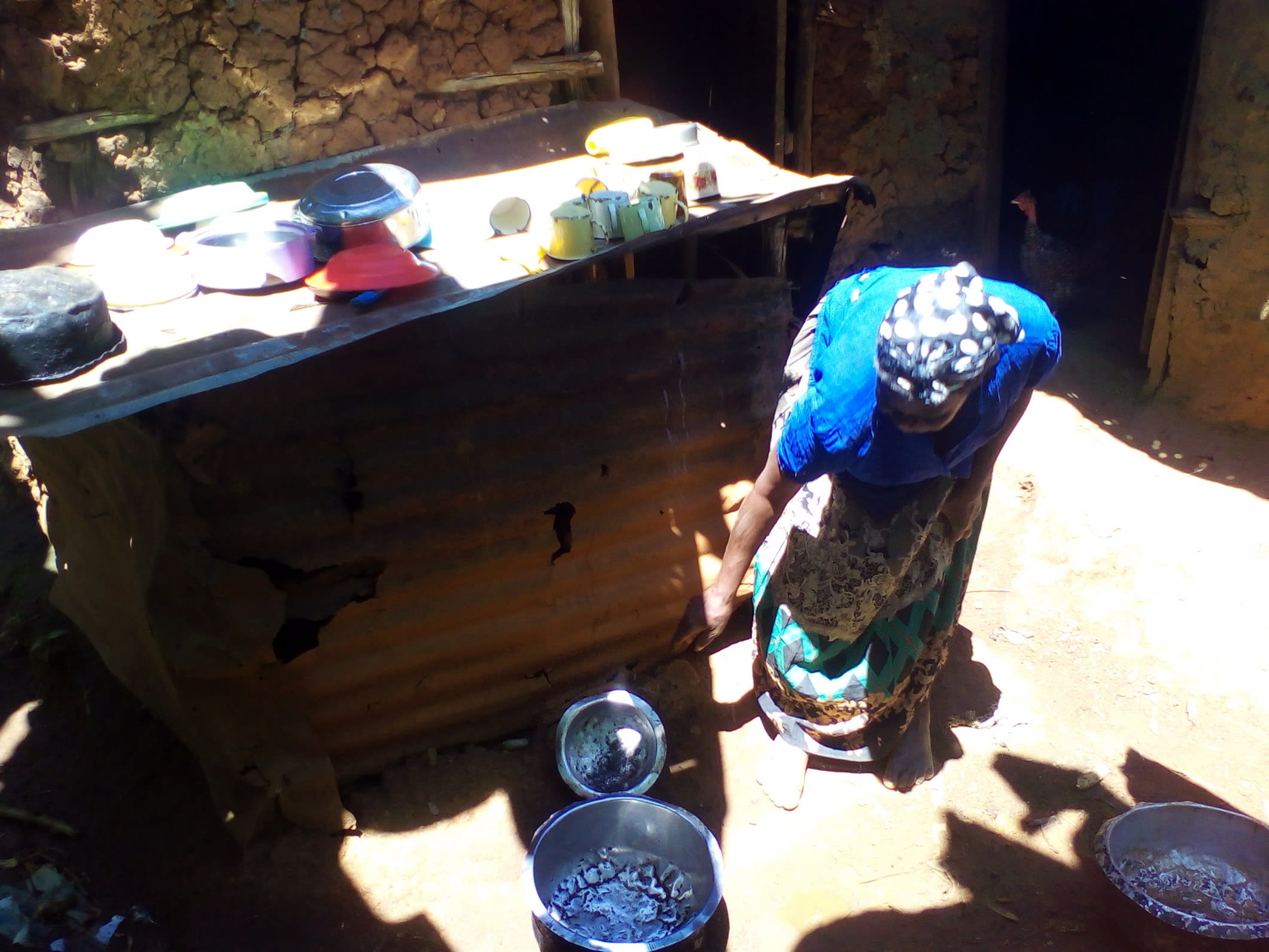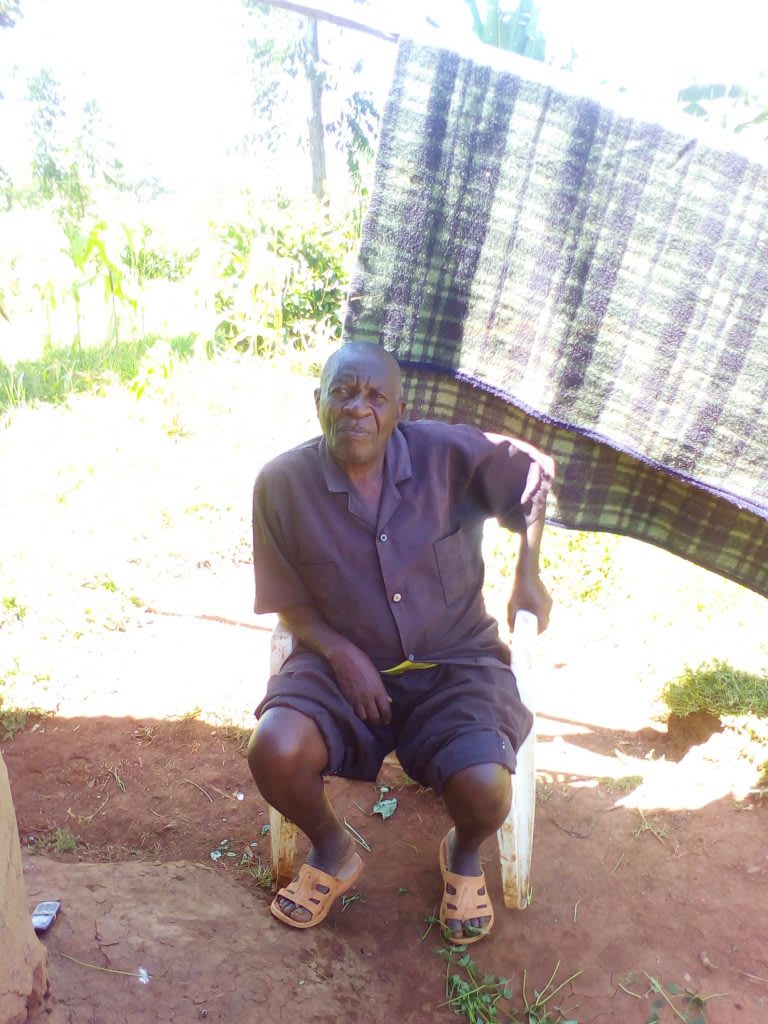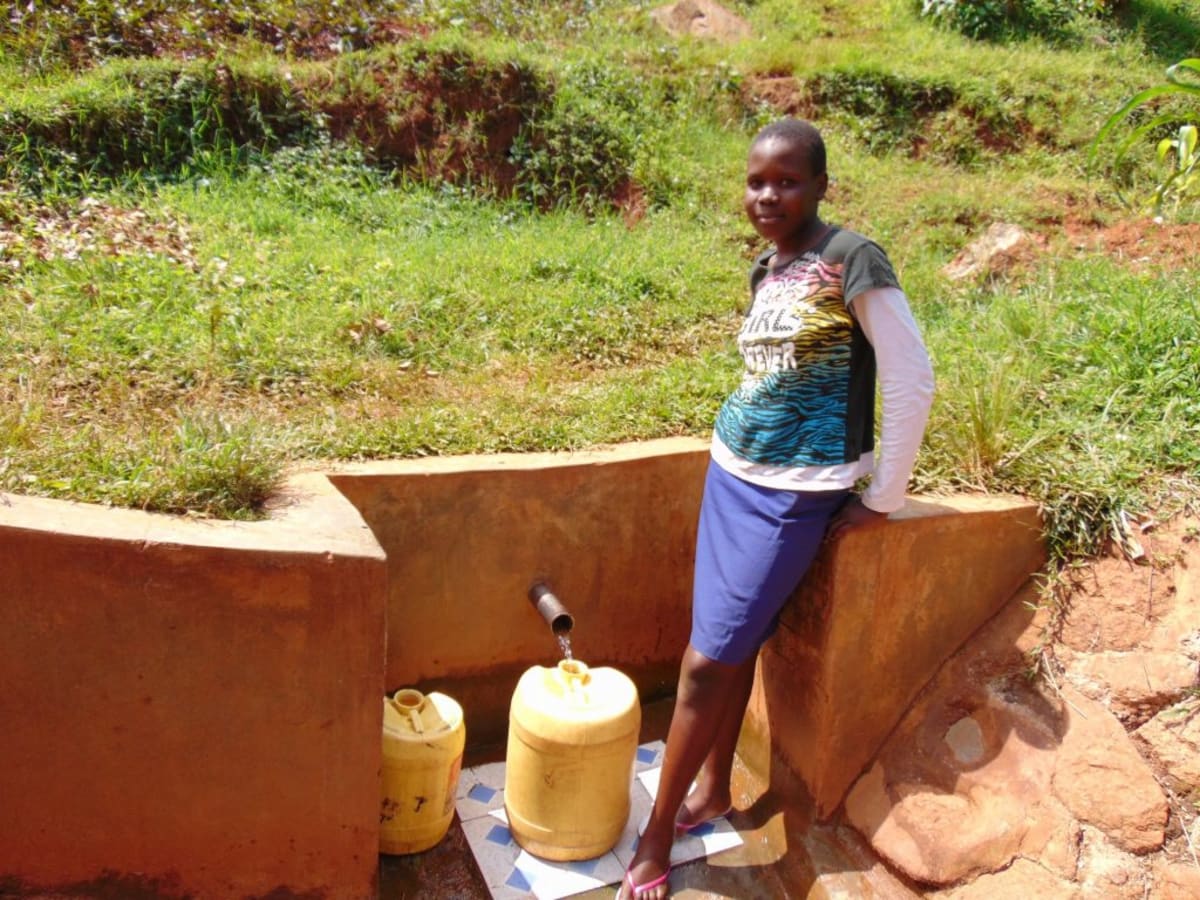Ms. Violet Musera lives in Lwangele, and shared a little bit about what a normal day looks like.
''I wake up at 6am to prepare breakfast for my family, then I clean all the utensils and the family house," she said.
"At about 8:30am, I go to the market to open my small business which I run till 6pm.''

She and many other women sell the produce their husbands are able to harvest from their farms. Men who don't own their own farm must seek casual employment from others.
Mr. Boaz Machayo admitted that "This village lacks professions, and this is due to high levels of illiteracy. Our fathers never considered education seriously, which has slowed development in the area. Most of the villagers are casual laborers in the nearby Mbale Town."
Water
Both Mrs. Musera, Mr. Machayo, and hundreds of others depend on Machayo Spring for their water. This water is used for everything, from drinking to cooking, to watering animals.
They know that the water at Machayo Spring is open to contamination, but the community members have no alternative.
Mr. Machayo is a pastor at a local church, and he uses that forum to remind his neighbors that they should always boil the dirty water before consuming it. Nonetheless, waterborne diseases are common in Lwangele.

We met women, like Charity Orengo at Machayo Spring, who dunk their containers right into the water to fill them. Mrs. Orengo said that she just keeps that water in her jerrycan since she has no other place to store it.
Sanitation
There's still a quarter of families who don't have their own latrines. They instead share with their closest neighbors. When it's not appropriate to share, a person needs to seek privacy among the bushes. This kind of improper waste disposal jeopardizes the health of the rest of the community.
There are no places to wash hands, nor are there other helpful sanitation tools like dish racks or clotheslines - many things are set out to dry on bushes or the grassy ground.
Here's what we're going to do about it:
Training
Community members will attend hygiene and sanitation training for at least two days. This training will ensure participants have the knowledge they need about healthy practices and their importance. The facilitator plans to use PHAST (Participatory Hygiene and Sanitation Transformation), CLTS (Community-Led Total Sanitation), ABCD (Asset-Based Community Development), group discussions, handouts, and demonstrations at the spring. One of the most important topics we plan to cover is the handling, storage, and treatment of water. Having a clean water source will be extremely helpful, but it is useless if water gets contaminated by the time it’s consumed. The building and usage of new latrines and handwashing stations will also be a big topic.
Training will also result in the formation of a committee that will oversee operations and maintenance at the spring. They will enforce proper behavior around the spring and delegate tasks that will help preserve the site, such as building a fence and digging proper drainage. The fence will keep out destructive animals, and the drainage will keep the area’s mosquito population at a minimum.
Sanitation Platforms
On the final day of training, participants will select five families that should benefit from new latrine floors.
Training will also inform the community and selected families on what they need to contribute to make this project a success. They must mobilize locally available materials, such as bricks, clean sand, hardcore, and ballast. The five families chosen for sanitation platforms must prepare by sinking a pit for the sanitation platforms to be placed over. All community members must work together to make sure that accommodations and food are always provided for the work teams.
Spring Protection
Protecting the spring will ensure that the water is safe, adequate and secure. Construction will keep surface runoff and other contaminants out of the water. With the community’s high involvement in the process, there should be a good sense of responsibility and ownership for the new clean water source.
Fetching water is predominantly a female role, done by both women and young girls. Protecting the spring and offering training and support will, therefore, help empower the female members of the community by giving them more time and efforts to engage and invest in income-generating activities.
This project is a part of our shared program with Western Water And Sanitation Forum (WEWASAFO). Our team is pleased to provide the reports for this project (edited for clarity) thanks to the hard work of our friends in Kenya.

 Protected Spring
Protected Spring
 Rehabilitation Project
Rehabilitation Project































